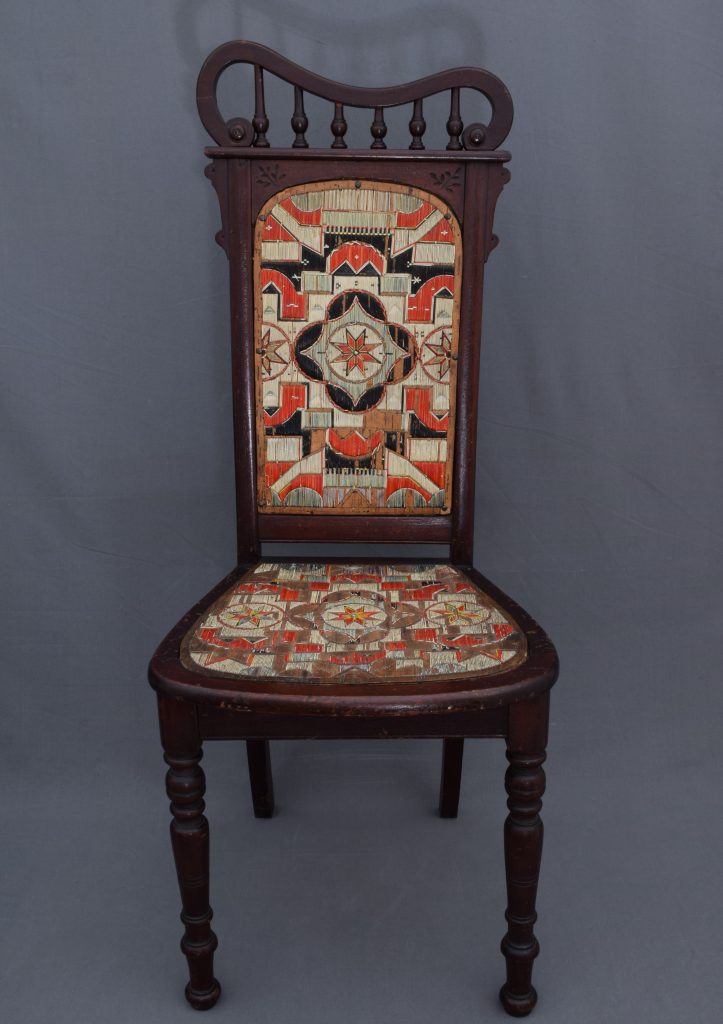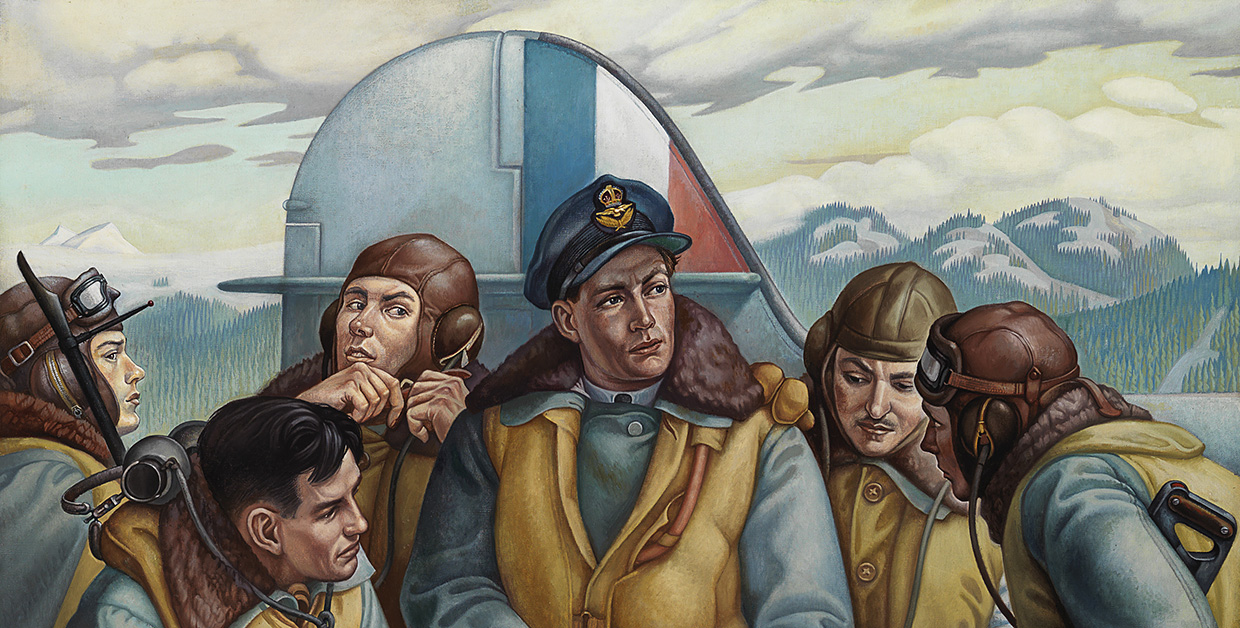From the series “Dispatches: Backgrounders in Canadian Military History”
(Note that some of the content in this series is outdated and is under review.)
The end of the Second World War in 1945 found Canada a major military and economic power, but not one rushing headlong towards greater international responsibility. While some Canadians believed the country could no longer afford the quasi-isolationist foreign policy of the 1930s, the post-war Liberal government of Prime Minister W.L. Mackenzie King continued to move cautiously on the world stage. In a January 1947 speech, Secretary of State for External Affairs Louis St. Laurent acknowledged that to protect its interests Canada must entertain external defence commitments. It was a form of pragmatic activism not universally shared in Canada, though support for it was growing stronger. Many influential Canadian officials already believed that an aggressive Soviet Union needed to be ‘contained’.
Subsequent events appeared to confirm their fears. In February 1948, Czechoslovakia’s Communist party seized control of the country’s government and suppressed dissent. The following month, five West European states concluded a mutual defence pact (the Brussels Treaty), hoping desperately that the United States would soon join; several days later, Canadian, American, and British representatives discussed mutual security in Washington, D.C. That autumn, the secret talks — expanded to include several other European states — proceeded against the backdrop of a Soviet attempt to coerce French, British, and American forces to leave Berlin, then jointly occupied under mutual agreement.
The West’s response to the Berlin Blockade — a sustained British-American airlift which ultimately forced Moscow to back down — was one of the defining moments of the Cold War. Canada, upset at London’s presumption of automatic Canadian support, did not participate but the enthusiasm of Canadian diplomats for a formal defence pact continued.
Canada sought military security in the Washington talks, but also a balanced Western response to the Soviet challenge encompassing political dialogue, economic cooperation, and the development of shared values. Involving the United States formally in Western defence, while balancing its influence within a multinational framework, was critical to the project. Canadian officials like Hume Wrong and Lester B. Pearson negotiated successfully for an article in the treaty on nonmilitary cooperation but, reflecting the preferences of most other participants, the resulting text rested primarily on a guarantee of mutual military assistance in response to external threats. Twelve nations signed the North Atlantic Treaty on 4 April 1949: Belgium, Canada, Denmark, France, Iceland, Italy, Luxembourg, the Netherlands, Norway, Portugal, the United Kingdom, and the United States.
Speaking at the signing ceremony, Pearson, who had replaced St. Laurent as secretary of state for external affairs when the latter became prime minister in November 1948. noted that Canadians “feel deeply and instinctively” that the treaty is “a pledge for peace and progress”. For the first time in its history, Canada had joined a peacetime military alliance.
The treaty provided the legal and contractual basis for the North Atlantic Treaty Organization (NATO), but not the military strength to back it up. Communist aggression in Korea (June 1950) forced the issue by persuading Ottawa and all Western capitals that the USSR was moving into a new and dangerous phase. NATO created an integrated military force under American General Dwight D. Eisenhower, the first supreme allied commander in Europe (SACEUR). Canada, already helping to defend South Korea, now raised troops simultaneously for service in Europe. In November 1951, for the third time in less than forty years, Canadian troops again crossed the Atlantic. By the following year, 10,000 of them were based in West Germany and France. An infantry brigade group of 6,670 troops, an air division of twelve squadrons (up to 300 aircraft), and some forty warships constituted Canada’s strong commitment in these early years, plus more dedicated as reinforcements in the event of war. These commitments were largely responsible for defence spending accounting for 45 per cent of the federal budget.
Nevertheless, the efforts of Alliance members were modest compared to the troops available to the Eastern Bloc. An outnumbered NATO soon relied heavily on tactical nuclear weapons to deter Soviet attack, conventional forces acting merely as a ‘trip-wire’ to a possible nuclear response. The admission of a rearmed West Germany in 1955 accentuated the political necessity of ‘forward defence’, or defending Alliance territory as far to the east as possible. and entailed a significant military disadvantage: concentrating NATO‘s limited military resources in almost linear fashion close to the border. Tactical nuclear weapons at least guaranteed that any Soviet breakthrough could be countered by superior firepower. From the early 1960s, Canada provided an important part of this nuclear punch. A protracted dispute with the United States kept Canadian forces from acquiring access to nuclear warheads for several years, but for a decade thereafter Canadian fighter-bombers and surface-to-surface missiles trained to meet the Soviet threat with a storm of nuclear warheads.
By the mid-1960s, the Soviet Union’s growing nuclear arsenal had begun to undermine the credibility of the West’s nuclear deterrent. In 1966, France, openly sceptical of American promises of nuclear support, withdrew from NATO‘s integrated military structure (though not from the Alliance) and ordered Canadian and American bases there closed. Pearson, then prime minister, wondered sarcastically whether Canada should also bring home the bodies of its 100,000 dead from two world wars, many of whom were buried in France. NATO‘s new ‘flexible response’ strategy, adopted in 1967 after years of American lobbying, envisaged responding to Soviet threats at all possible levels of conflict, including conventional forces which therefore had to be strengthened. An expensive option, flexible response did not always coincide with the fiscal priorities of member governments.
Canadian attitudes towards NATO were also changing. By the late 1950s, some Canadians believed that participation in a military alliance dominated by the United States was unwise; others believed that Canadian interests could best be secured through the United Nations, or even through renewed isolationism. Creation of the North American Air Defence Agreement (NORAD) in 1957-58, a joint Canadian-American arrangement, bolstered the continent’s defences against Soviet bomber attack but, despite Canadian assurances to the contrary, was seen by allies as largely irrelevant to the Alliance’s primary line of defence in Europe and the North Atlantic. In the mid-1960s, even Pearson, who had helped negotiate the NATO treaty, expressed doubts about the future of Canadian commitments in light of Washington’s preponderant influence and Europe’s reluctance to spend more in its own defence.
By 1968, many Canadians believed the risk of Communist aggression in Europe less immediate than the need for improved social programs and economic and cultural protection against foreign, especially American, influence. United States policies in Vietnam appeared to some as further proof that the real antidemocratic force in world politics lay much closer to home. The Warsaw Pact, a Soviet-led compact of Eastern European states created in 1955 in response to West German rearmament, invaded fellow member Czechoslovakia in 1968 after the latter’s flirtation with Western style democratic reform. The attack reminded Canadians that Soviet Communism was hardly a benign force. Still, for most of the following ten years détente, or relaxed tensions, greatly influenced Canada’s relations with Moscow and its satellites. Canada used the opportunity to reduce further its defence budget and armed forces, encourage nuclear and conventional arms control, and reorient its defence priorities towards protecting Canadian sovereignty.
In 1968-69, Liberal Prime Minister Pierre Trudeau even toyed with the idea of pulling out of NATO entirely. Cabinet opposition stayed his hand, but Trudeau’s conviction that NATO had grown too important in Canadian policymaking was difficult to refute at a time when nearly all of Canada’s military personnel trained mainly for a future war against the Warsaw Pact. Trudeau halved the army’s commitment to Europe, eliminated the nuclear strike role, and downplayed suggestions that Canada’s actions would limit its political influence with NATO members.
In 1970, after nineteen years with the British Army of the Rhine in northern Germany, Canada’s brigade group moved south from several bases around Soest to Lahr, a small town in the Black Forest region of southwestern Germany. Renamed the 4th Canadian Mechanized Brigade Group in 1968, defence cuts had reduced the formation to less than 3,000 troops by the early 1970s. Canada’s air force commitment, now just three squadrons instead of the earlier twelve, concentrated at nearby Baden-Soellingen. At a time when NATO doctrine placed increasing emphasis on the need for robust conventional forces, unhappy allies complained bitterly that Canada was not pulling its weight. Despite the purchase of new weapon systems like the Leopard C1 main battle tank and McDonnell Douglas CF-18 Hornet fighter-bomber in the late 1970s and early 1980s, Trudeau’s tenure had left Canada’s NATO commitment at a low ebb.
In the 1980s, staunchly conservative governments in several Western countries embarked on military spending programs to counter what they perceived as the Warsaw Pact’s growing military advantage. In Canada, a Progressive Conservative government under Brian Mulroney, elected in 1984, attempted in its 1987 defence policy review to strengthen Canada’s military and its commitments to NATO, pledging more troops and aircraft to Europe than at any time since the early 1960s. As NATO‘s capabilities improved, economic problems and social unrest within the Warsaw Pact produced several reformist governments eager to compromise with the West to secure stability at home. Mutual arms control agreements and political reforms heralded a wave of democratic upheaval which spelled the end of the Warsaw Pact. After substantial military reductions, early in 1992 Ottawa announced that the last of its ground and air formations in Europe would be coming home.
As Canadians welcomed the end of the Cold War in the early 1990s, they also witnessed the transformation of NATO. Previously a collective defence organization preoccupied with defending its members against external aggression, the Alliance now assumed a broader range of security responsibilities. With the Soviet military threat ended, NATO supported United Nations’ efforts to secure peace in the Balkans and accepted three former Warsaw Pact adversaries (Poland, Hungary, and the Czech Republic) as members in 1999.
Canada strongly supported both NATO‘s enlargement and internal reform, arguing that NATO had now become the embodiment of those ideals first enunciated in Article 11 of the treaty: a forum for nonmilitary cooperation and dialogue from which security, and a true sense of North Atlantic community, might gradually emerge. Not all NATO observers concurred in this slightly selfserving assessment, but Canada’s strong military participation in NATO‘s air campaign against Serbian forces in and around Kosovo (1999) appeared to indicate that Ottawa’s renewed faith in the organization extended well beyond rhetorical commitment. In 1999, after fifty years of membership. Canada seemed ready to move into the next century as a proud and contributing member of the Atlantic Alliance.
Further reading
- Eayrs, James, In Defence of Canada, Volume Four: Growing Up Allied, University of Toronto Press, Toronto, 1980.
- Gaddis, John Lewis, We Now Know: Rethinking Cold War History, Oxford University Press, New York, 1997.
- Granatstein, J.L. and Robert Bothwell, Pirouette: Pierre Trudeau and Canadian Foreign Policy, University of Toronto Press, Toronto, 1990.
- Lyon, Peyton, NATO as a Diplomatic Instrument, Atlantic Council of Canada, Toronto, 1970.
- Maloney, Sean M., War Without Battles: Canada’s NATO Brigade in Germany, 1951-1993, McGraw-Hill Ryerson, Toronto, 1997.
- Rempel, Roy, Couterweights: The Failure of Canada’s German and European Policy, 1955-1995, McGill-Queen’s University Press, Montreal, 1996.


